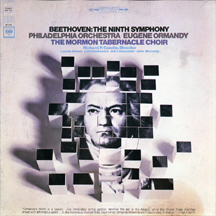BEETHOVEN'S NINTH SYMPHONY
Symphony No. 9 in D minor, Op. 125 (also known as “the Choral”), is Ludwig van Beethoven’s final complete symphony. Completed in 1824, the symphony is one of the best-known works in classical music. Among critics, it is almost universally considered Beethoven’s greatest work, and many consider it one of the greatest pieces of western music. The symphony was the first example of a major composer using voices in a symphony (thus making it a choral symphony). The words are sung during the final movement by four vocal soloists and a chorus. They were taken from the “Ode to Joy”, a poem written by Friedrich Schiller in 1785 and revised in 1803, with additions made by the composer. Today, it stands as one of the most played symphonies in the world. (More from Wikipedia)
Conversely, one might think that deafness and music would not mix at all; but I trust that we have all by now seen the terrific Richard Dreyfuss movie Mr. Holland’s Opus that puts the lie to that notion. (For what it’s worth, I have had several people tell me that I bear a certain resemblance to Dreyfuss – particularly from the back I would say). The best known example is that of Ludwig van Beethoven (as long as I have mentioned Blind Melon, I might as well bring up the quirky 1990’s band Camper Van Beethoven, who dedicated one of their albums to Patty Hearst). Beethoven grew increasingly deaf as he got older; and by the time his Ninth Symphony was finished, he was profoundly deaf. Considering that this is one of the most beloved musical compositions of all time, his lack of hearing was certainly not a problem for this musical giant.
(June 2011)















